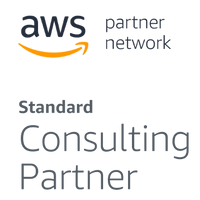Onshore vs. Offshore vs. Nearshore Software Development: What is the Difference?
November 21, 2023
In today’s fast-paced technology landscape, choosing the right software development model is crucial. Whether it’s onshore, nearshore, or offshore, each approach has its unique strengths and challenges. Understanding these differences is key to a project’s success, especially when balancing cost, quality, and timely delivery.
Understanding Offshore Development
Offshore development has been a staple in the industry for years. It involves partnering with teams in far-off countries, often in significantly different time zones. Traditionally, this model has been preferred for its cost-effectiveness. Companies can hire developers at a lower cost per hour, making it an attractive option for budget-conscious projects.
However, while offshore development may seem economically viable, the aspects of quality and return on investment are often subjects of debate. There’s a trade-off to consider: lower costs might come at the expense of communication hurdles and time zone challenges.
Understanding Nearshore Development
Nearshore development, on the other hand, offers a middle path. It involves collaborating with teams in countries that are closer in proximity, usually within a few time zones.
This model provides a balance – it maintains cost-effectiveness while offering easier collaboration and communication due to the smaller time differences. Nearshore development is often seen as a ‘best of both worlds’ scenario, where companies can save on costs without significant sacrifices in operational efficiency or project oversight.
Understanding Onshore Development
Onshore development, which we at Keyhole specialize in, involves working with companies within your own country, even possibly local to your area. This model stands out for its emphasis on quality and direct collaboration.
While it may not be the most cost-effective option compared to offshore or nearshore, onshore development offers unparalleled advantages in terms of communication, cultural alignment, and quality of resources. Many clients discover that the higher initial investment in onshore development pays off through superior quality outcomes and more efficient project timelines.
Critical Factors in Model Selection for Software Development
When choosing between these development models, several factors need consideration. How critical is the timely and on-budget delivery of your project? While offshore might offer immediate cost savings, the challenges in communication and time zone differences can impact project timelines and overall quality.
Nearshore offers a balance, but may still present some communication barriers. Onshore, albeit higher in initial cost, provides a smoother communication channel and a higher assurance of quality, often leading to better long-term project success.
The Keyhole Approach to Software Development
Expertise, Client Focus, and Modern Solutions
At Keyhole, we are not just a software development firm; we are a team of passionate experts committed to delivering the best solutions to our clients. Our approach is centered around a deep understanding of modern technologies, a culture of knowledge sharing, and an unwavering focus on our clients’ needs. Whether you choose onshore, nearshore, or offshore, our guidance is always geared towards finding the best fit for your project’s unique requirements.
Conclusion: Choosing the Right Software Development Model
In summary, each software development model offers distinct advantages and potential drawbacks. Your decision should be driven by your project’s specific needs, considering factors like budget, quality expectations, and time constraints.
At Keyhole, we are here to help you navigate these choices, ensuring your project is supported by the right model for optimal success. For a tailored approach to your software development needs, don’t hesitate to contact us for assistance.
More From Chris Bristow
About Keyhole Software
Expert team of software developer consultants solving complex software challenges for U.S. clients.









